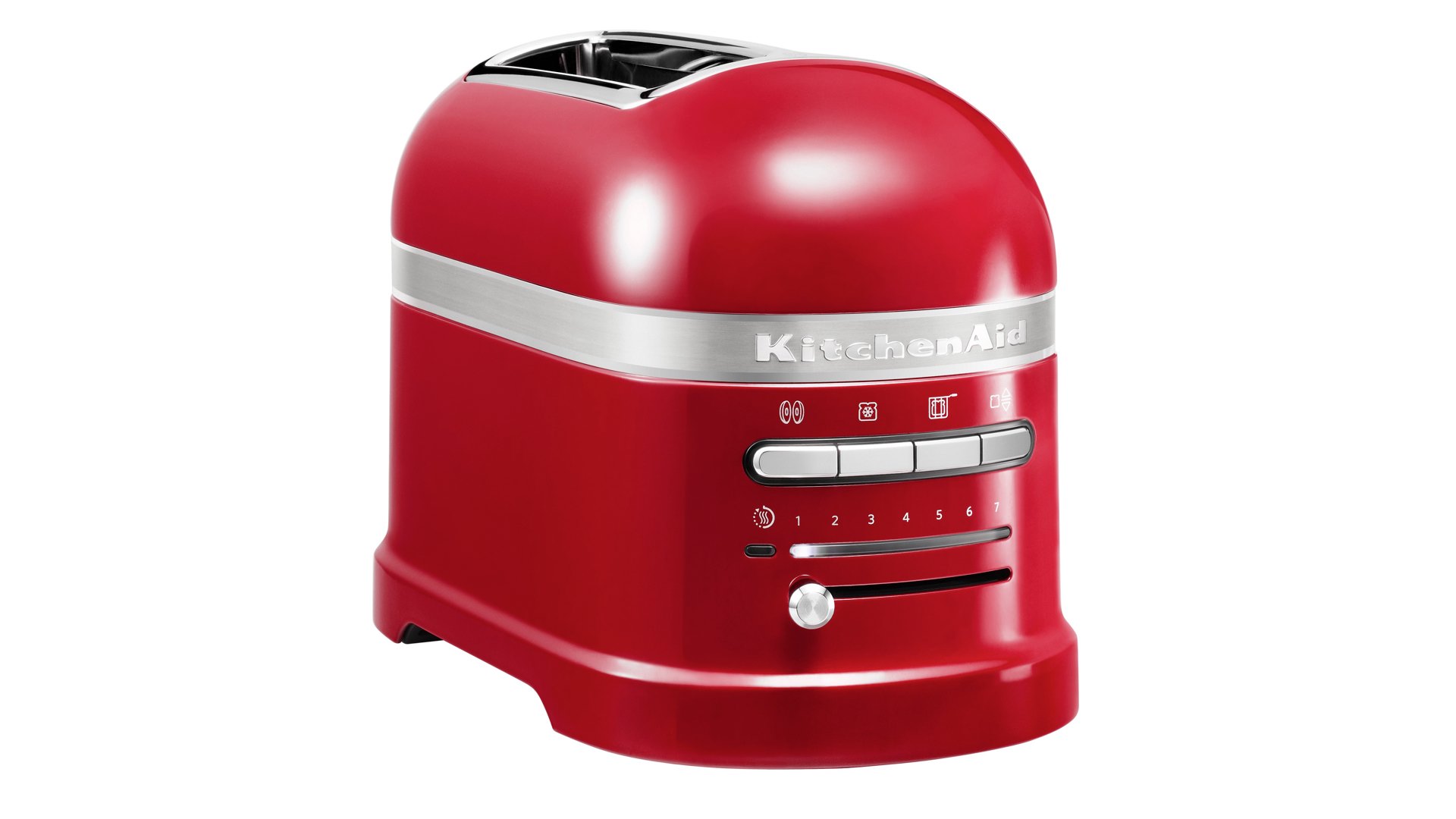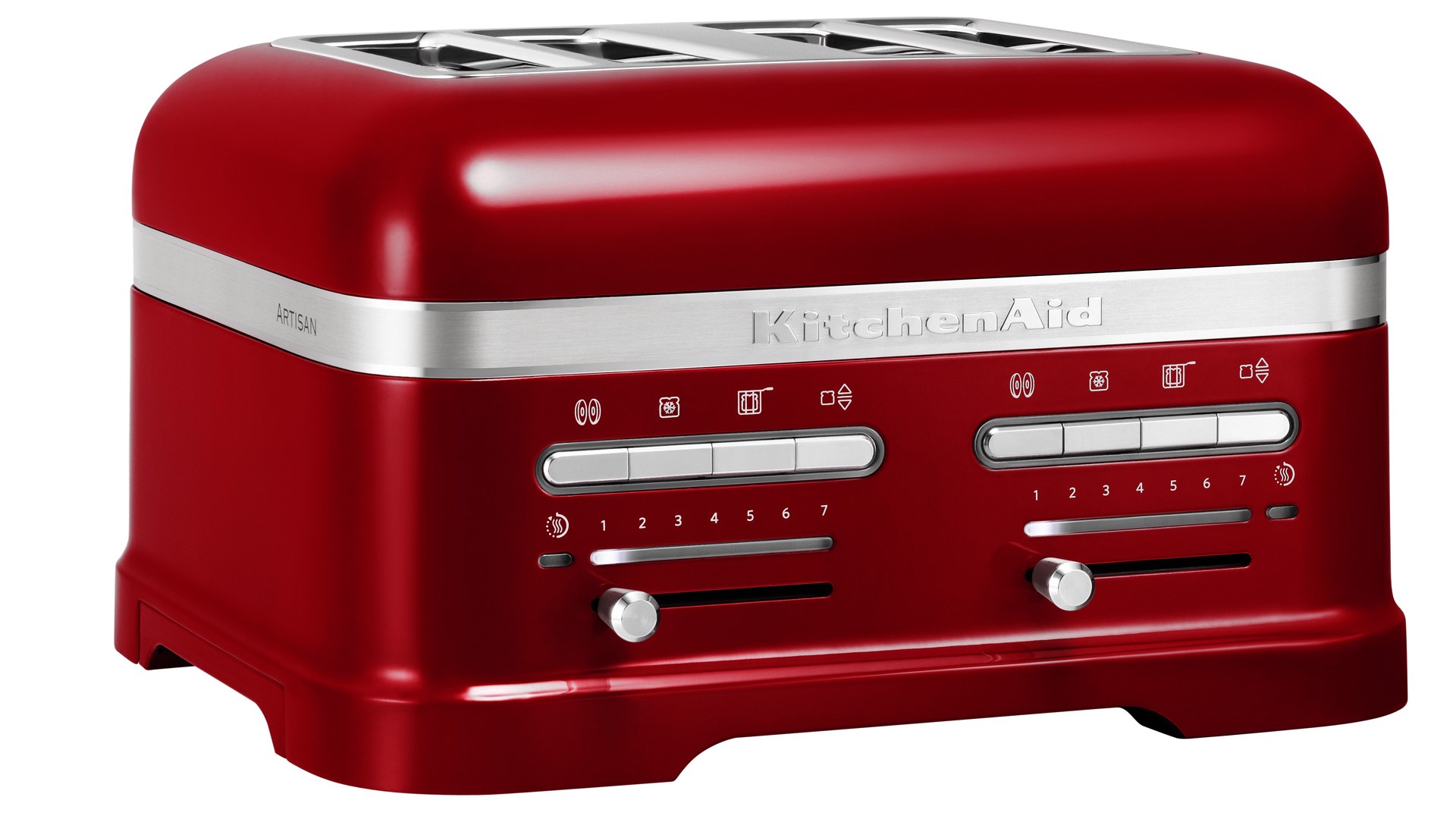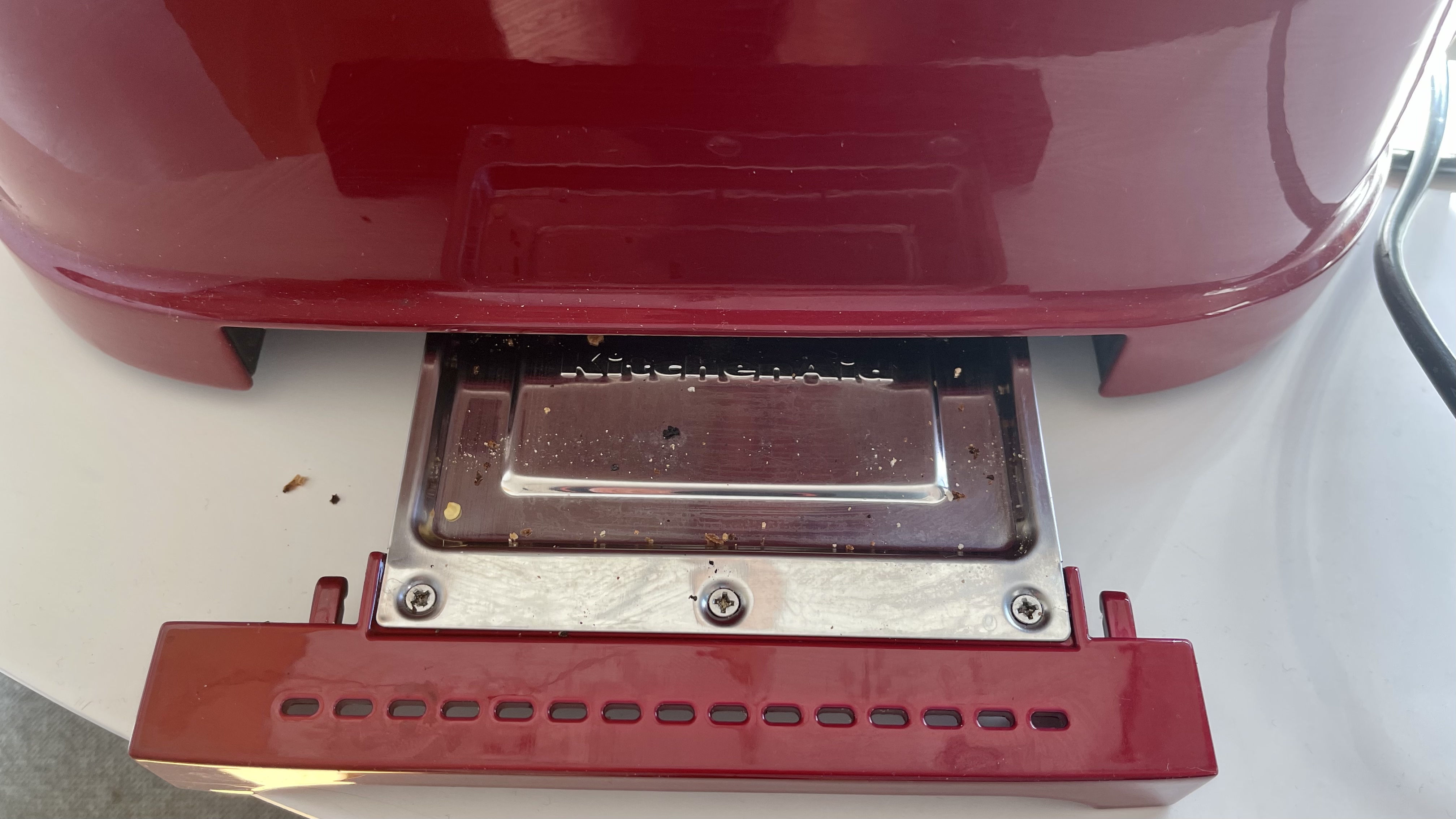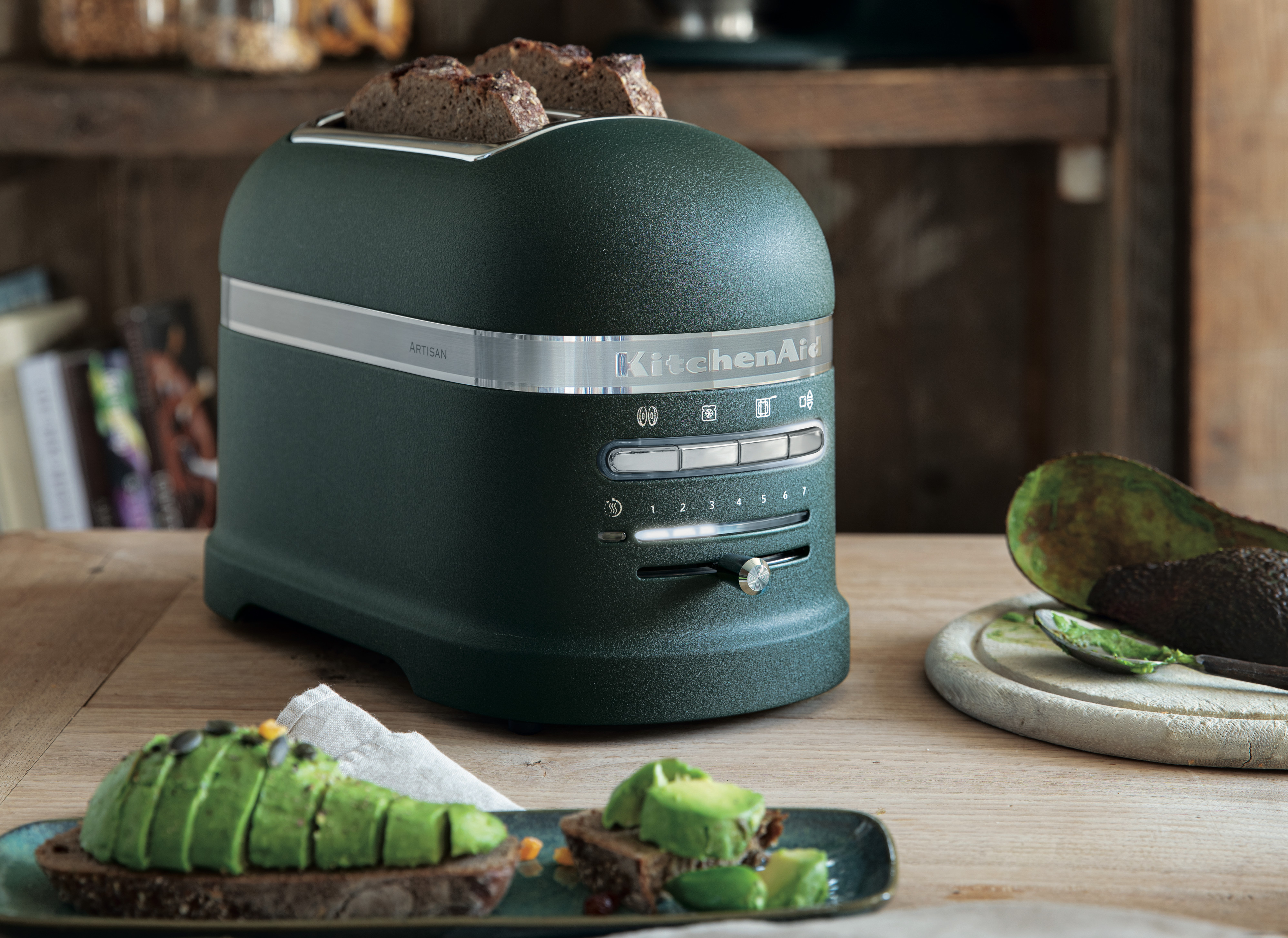KitchenAid Artisan toaster review: hulking mega-toaster deserves a toast
The KitchenAid Artisan toaster is a status symbol as much as a small grill for bread


KitchenAid Artisan toaster – Pro-Line toaster in the USA and Australia – is a premium small appliance that largely lives up to its price tag. Obviously you can buy toasters for way less that do largely the same thing, but where's the fun in that?
-
+
Looks suitably premium
-
+
Makes great toast
-
+
Easy to control
-
-
You either love the look or… you don't
Why you can trust T3

Here's the KitchenAid Artisan toaster – or KitchenAid Pro-Line toaster if you are reading this outside of Europe – review, in a sentence: big toaster, big price, big… toast production skills.
The KitchenAid Artisan toaster is most definitely one of the best toasters you can buy, if what you want is something reassuringly weighty and very striking in appearance – I hesitate to use the word 'attractive' for something that resembles a bus and weighs nearly as much. In the UK, yeast-based spread Marmite is often put on toast, and also serves as a metaphor for things that people either 'love or hate', and that probably applies here.
You'll be pleased to hear it's also one of the best toasters I've tried when it comes to the boring stuff, ie: making toast and doing crumpets, bagels and so forth. It lacks a certain something in comparison to Sage and Dualit's competing premium toasters, but if you are on the 'Love' side of the Artisan toaster looks debate, it may still be just right for you. You can then add the Artisan model from our guide to the best kettles and place them next to your classic KitchenAid stand mixer in a very alluring Insta story.
If you're on the 'Hate' side, you may as well stop reading now and go do something more enjoyable.
KitchenAid Artisan/Pro-Line toaster: price and availability
Just to be clear here, this is the UK/Euro KitchenAid Artisan toaster. In America it's called the KitchenAid Pro-Line toaster. In Australia it's also called that, but there's also an Artisan toaster that is totally different to this one. Thanks KitchenAid!
Pricing is a little on the weighty side for a toaster, but then, it is a weighty toaster, especially the 4-slice version. In the UK the Artisan toaster costs about £200. In the USA the Pro-Line Toaster starts at about $300 and in Australia around AUS$300. Make sure you keep some money in reserve to buy some bread products as well.
KitchenAid Artisan toaster: design and build

One word: LARGE. Another word: heavy. And some more words: available in a range of nice colours, including the iconic Empire Red seen here.
Get all the latest news, reviews, deals and buying guides on gorgeous tech, home and active products from the T3 experts
The KitchenAid Artisan takes cues from its classic stand mixer in terms of being self-consciously well built, with a mostly-metal construction and prominent, very obvious buttons and levers. Admittedly, it is very hard to make a toaster that is complicated, but this one could be understood by a Martian within about five minutes.
Luxury touches include the way the bread glides down via a motorised platform, when it detects bread has been inserted, and then pinned between the heating elements. This does mean you need to get both slices (or all four if opting for the larger model) in place at more or less the same time, so no dilly-dallying.

HUGE.
An up-down button on the front then lets you see how your toast is getting on, or put it down for a bit longer if you're not satisfied with its 'done-ness'.
The other buttons cover bagel toasting – ie: on one side only – toasting bread from frozen and, probably the most useful, keeping it warm once toasted, without scorching it to a crisp.

The crumb tray at the bottom pulls out easily, although it is a lot smaller than you expect it's going to be
KitchenAid Artisan toaster: toasting performance

The Artisan's wide slots are good for bread of most thicknesses, although a lot of more artisan breads are too long, unless you cut them in half. KitchenAid does also make a long slot toaster, if you favour the longer bread styles.
As with most toasters, you should probably start your first toast batch of the morning with it on a very high setting if you want well-done toast. If you then move straight to doing another batch, slide the temperature control down a little. You soon get the hang of it.
As you would expect/hope, the Artisan toaster browns bread, rolls, crumpets, bagels and more very evenly and fairly quickly – you can't rush good toast. With sliced bread the results are excellent but not really that much better than you'd get with a toaster costing £20. However – again as you might expect – it performs better with more expensive and tasty forms of bread.
The ability to mechanically levitate the bread to see how it is cooking is handy, but it does mean the timer starts again from zero if you put it down again, unlike the Sage and Dualit flagship toasters.
The bagel setting does what it's meant to do, although I have no idea why you would only want to toast a bagel on one side. The frozen bread setting works adequately – you can, of course, toast frozen bread without it, but it's handy to have. The keep warm setting is excellent.
If you buy the optional toasted sandwich cage, you can also use the KitchenAid Artisan to cook, obviously, toasted sandwiches. I haven't tried this, but I suspect it might cause a certain amount of crumb tray grief, as it fills with molten cheese.
KitchenAid Artisan toaster: verdict

I always think of the KitchenAid Artisan toaster as one of the 'Big Three' toasters, alongside Sage Smart Toaster (aka Breville Smart Toaster) and Dualit Newgen. It's my least favourite of the three, but there is no doubt it's an excellent toaster. If you love the look of it, chances are you'll love the way it toasts as well.
Yes, I'm aware you can get toasters that do more or less the same job for a fraction of the price. If you'd rather have a toaster like that, I always recommend Russell Hobbs.
Those seeking something more high-tone, and more resemblant of a London bus should definitely shortlist this KitchenAid Artisan (or Pro-Line!) toaster. Ding ding!

Duncan is the former lifestyle editor of T3 and has been writing about tech for almost 15 years. He has covered everything from smartphones to headphones, TV to AC and air fryers to the movies of James Bond and obscure anime. His current brief is everything to do with the home and kitchen, which is good because he is an excellent cook, if he says so himself. He also covers cycling and ebikes – like over-using italics, this is another passion of his. In his long and varied lifestyle-tech career he is one of the few people to have been a fitness editor despite being unfit and a cars editor for not one but two websites, despite being unable to drive. He also has about 400 vacuum cleaners, and is possibly the UK's leading expert on cordless vacuum cleaners, despite being decidedly messy. A cricket fan for over 30 years, he also recently become T3's cricket editor, writing about how to stream obscure T20 tournaments, and turning out some typically no-nonsense opinions on the world's top teams and players.
Before T3, Duncan was a music and film reviewer, worked for a magazine about gambling that employed a surprisingly large number of convicted criminals, and then a magazine called Bizarre that was essentially like a cross between Reddit and DeviantArt, before the invention of the internet. There was also a lengthy period where he essentially wrote all of T3 magazine every month for about 3 years.
A broadcaster, raconteur and public speaker, Duncan used to be on telly loads, but an unfortunate incident put a stop to that, so he now largely contents himself with telling people, "I used to be on the TV, you know."